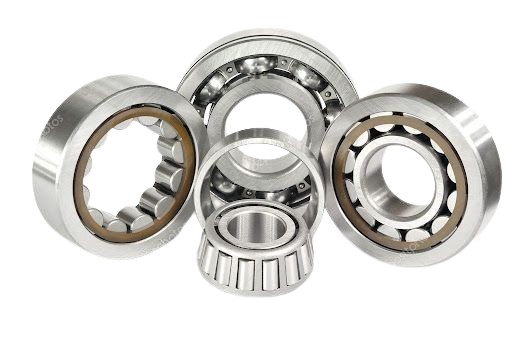Modern mechanical systems demand precision, efficiency, and durability—and at the heart of many of these systems is the roller ball bearing. Whether in a vehicle’s wheel hub, an industrial conveyor, or an electric motor, these components keep machines running smoothly by minimizing friction and allowing for seamless rotation.
Understanding how roller ball bearings work and where they are used can help both engineers and technicians choose the right part for the job. This article will walk you through the structure, benefits, use cases, and maintenance of roller ball bearings—making it easier to make smart choices for long-term performance.
What Are Roller Ball Bearings?
Roller ball bearings are mechanical components designed to support rotating shafts while reducing friction between moving parts. They consist of:
- Outer and inner races – Circular tracks that house the rolling elements
- Rolling balls – Made of hardened steel or ceramic for durability
- Cage – Holds the balls in place evenly to avoid collisions
- Seals or shields – Protect against contaminants like dust or grease leaks
This structure allows roller ball bearings to handle radial and axial loads while rotating at high speeds with minimal energy loss.
Key Benefits of Roller Ball Bearings
Using roller ball bearings offers several advantages:
- Reduced Friction: Less energy loss means smoother and more efficient motion
- High Load Capacity: Supports both radial and axial loads in rotating applications
- Long Lifespan: Made of durable materials that resist wear and tear
- Compact Design: Fits into small spaces without sacrificing strength
- Low Maintenance: Especially when sealed or shielded properly
These benefits make roller ball bearings suitable for everything from simple appliances to advanced industrial equipment.
Applications of Roller Ball Bearings
Roller ball bearings are used in a wide range of industries, including:
- Automotive: In wheel hubs, gearboxes, and steering systems
- Industrial Machinery: For rotating shafts, motors, and conveyors
- Electronics: In cooling fans and hard drives
- Agriculture: In equipment exposed to outdoor conditions
- Medical Devices: Where precision and reliability are critical
Each application demands specific sizes and load ratings, so it’s crucial to consult manufacturer specifications when choosing a bearing.
Choosing the Right Roller Ball Bearing
When selecting a roller ball bearing, consider the following:
- Load Requirements – Determine the type (axial, radial, or combined)
- Speed Ratings – Ensure it can handle the RPMs of your application
- Operating Environment – Temperature, moisture, and contamination levels
- Mounting Space – Match bearing size with available space
- Material and Seal Type – Stainless steel for corrosion resistance, sealed or open types depending on environment
Reputable suppliers like NMR Bearing offer detailed product specs and support to help with the right selection.
Maintenance Tips for Long-Term Performance
While roller ball bearings are low maintenance, regular checks help extend their lifespan:
- Lubricate using manufacturer-recommended grease
- Inspect for unusual noise or vibrations
- Clean surroundings to avoid contamination
- Avoid overloading the bearing beyond its design limits
Preventive maintenance reduces downtime and saves on costly replacements.
Conclusion: Why Roller Ball Bearings Are a Smart Choice
The roller ball bearing is a small but vital component in countless mechanical systems. Its ability to reduce friction, handle high loads, and perform reliably in various environments makes it an essential part of modern engineering. From everyday machines to specialized industrial setups, roller ball bearings enable smooth operation and energy efficiency.
Whether you’re repairing equipment or building something new, choosing the right bearing is key to performance and safety. Visit NMR Bearing to explore a wide range of roller ball bearings that match your specific needs and ensure long-term success.
